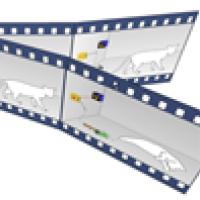
Plus Advent Calendar Door #21: Quantum rescue
Quick, quick, before the world ends get your head around Schrödinger's equation. This central equation of quantum mechanics is the origin of weird phenomena like quantum entanglement, also known as spooky action at a distance, and quantum superposition, being in several apparently mutually exclusive states at once. A possible consequence of the equation is the idea that the universe is constantly splitting into many parallel branches. So while one copy of you sitting in one of these branches might witness a spectacular end to the world today, another can rest assured that it will survive.
Schrödinger's equation — what is it?
In the 1920s the Austrian physicist Erwin Schrödinger came up with what has become the central equation of quantum mechanics. It tells you all there is to know about a quantum physical system and it also predicts famous quantum weirdnesses such as superposition and quantum entanglement. In this, the first article of a three-part series, we introduce Schrödinger's equation and put it in its historical context.
Schrödinger's equation — in action
Now it's time to see the equation in action, using a very simple physical system as an example. We'll also look at another weird phenomenon called quantum tunneling.
Schrödinger's equation — what does it mean?
Here comes the crazy bit. How should we interpret the solution to Schrödinger's equation, the wave function? What does it tell us about the physical world? Or indeed many worlds?
You can also read other articles on quantum physics and quantum mechanics on Plus.